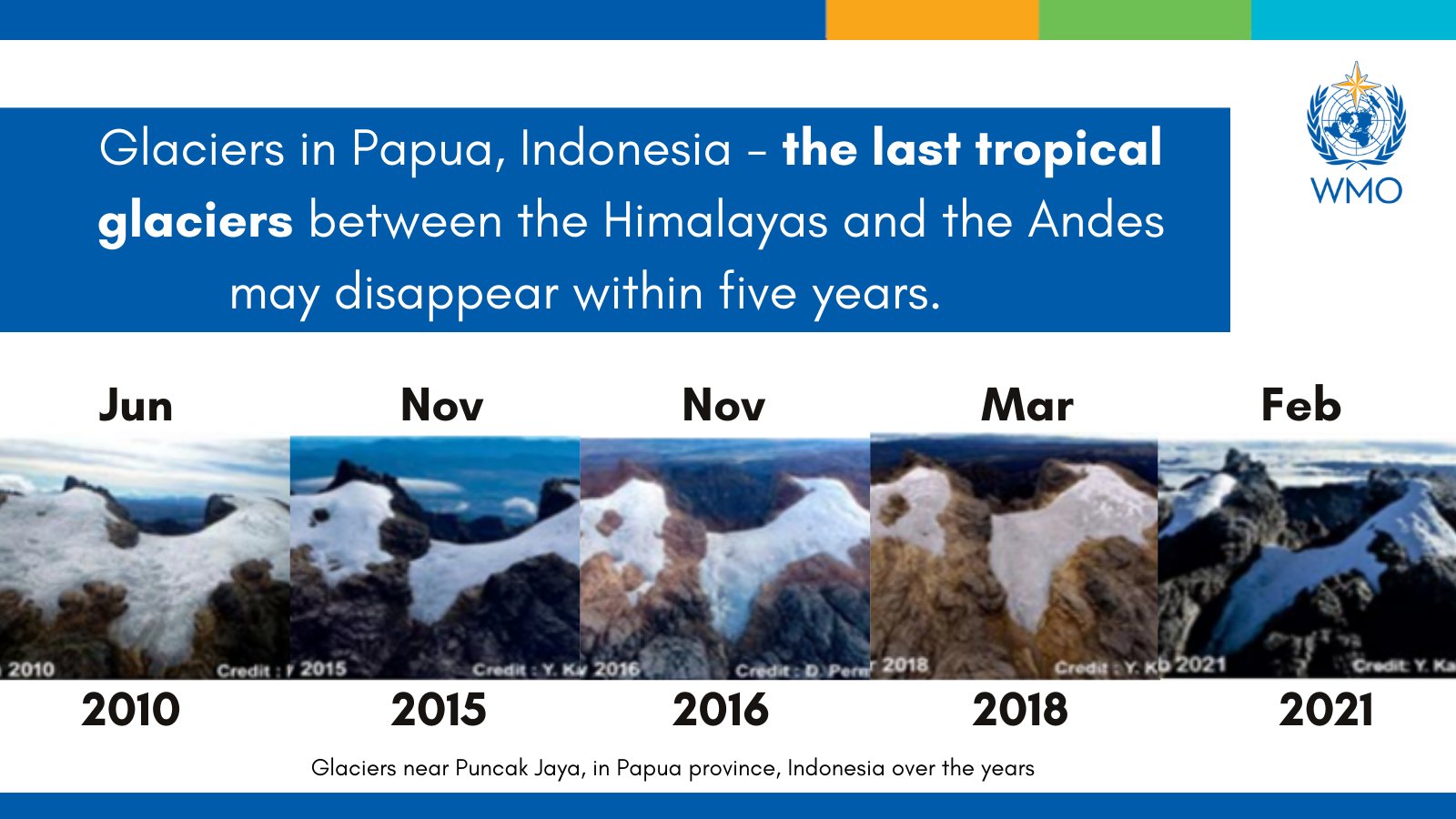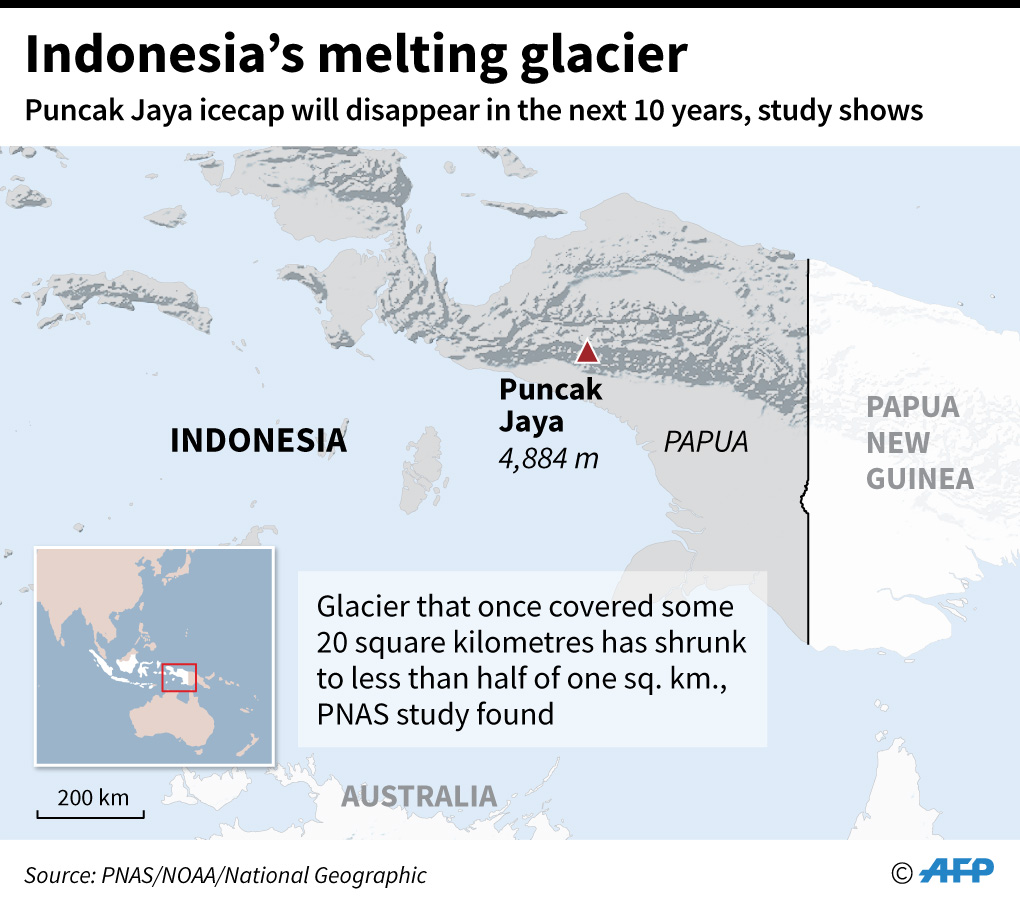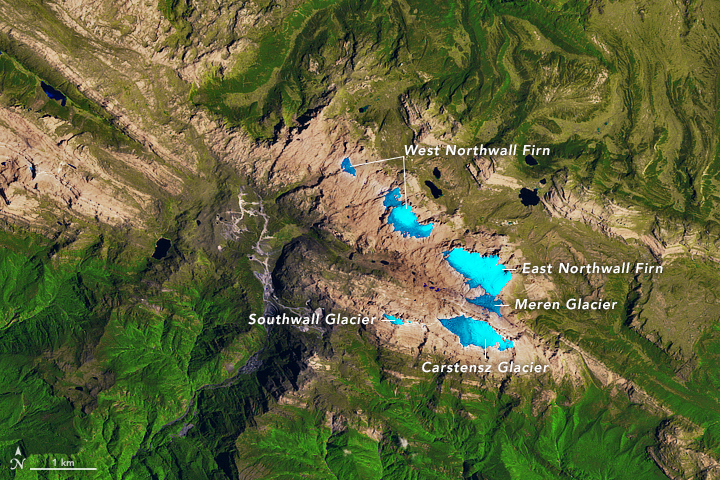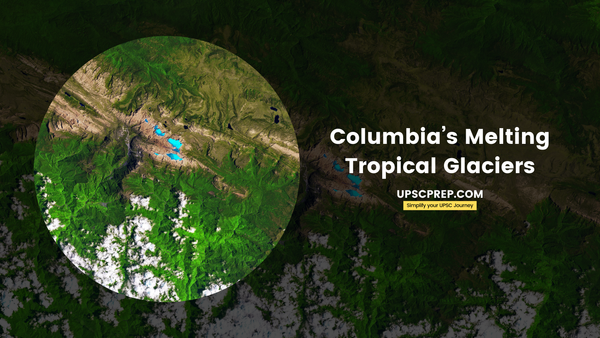Why in News?
- Ritacuba Blanco Glacier in Columbia has been highlighted due to its dramatic melt rates and the visible environmental changes, which have become a poignant symbol of the urgent challenges posed by climate change and global warming.

Location
- Ritacuba Blanco is situated in the Sierra Nevada del Cocuy National Park, approximately 250 kilometers northeast of Bogota, Colombia.
- This glacier is one of the six remaining tropical glaciers in Colombia, serving as a critical indicator of climatic changes in tropical zones, making them geographically significant features.


What are Tropical Glaciers?
Tropical glaciers occur in high mountain ranges in the tropics where rain turns into snow due to low temperatures - but the few left around the world are shrinking due to rising temperatures.
- There are only a few areas left globally, and they have shrunk significantly over the last few decades thanks to increasing temperatures.
- They can now only be found in very few places, mainly the Himalayas, the Andes, some of Africa’s highest elevations and Eastern Indonesia.
Indonesia’s national geophysics agency has found that the “Eternity Glaciers” in the Jayawijaya mountains of the country’s Papua province could melt completely by 2026 or before due to rising temperatures.



Recent Observations
- As of 2022, Ritacuba Blanco covered an area of 12.8 square kilometers, marking the lowest extent ever recorded by the Institute of Hydrology, Meteorology, and Environmental Studies (Ideam).
- This reduction in size is particularly significant, given the glacier's historical coverage.
- Current State: Recent reports indicate significant melting of the glacier, with visible cracks exposing the underlying rock.
Impact of Climate Change and El Niño
- Climate Change: The primary driver behind the glacier's rapid melting is the increase in greenhouse gases, which trap more heat in the atmosphere.
- El Niño: This periodic climatic event, occurring every two to seven years, exacerbates the glacier's melt rate.
- El Niño's effects include higher temperatures and reduced precipitation, reduced cloud cover, leading to less snowfall and more direct solar radiation on the glacier - has intensified the glacier's melt.
Environmental Consequences



- Historical Comparison: From 14 tropical glaciers existing in the early 20th century, only six remain today, illustrating a stark decrease due to climatic changes.
- Visual Evidence: The glacier's ice walls, which stood six meters high at the end of the previous year, have reduced to just one meter, highlighting the rapid pace of ice loss.
Global and Local Implications
- Comparative Context: The situation mirrors global issues seen in other critical ice-covered regions, such as the Himalayas, where glacier retreat threatens water security for millions.
- Local Impact: The melting has led to noticeable environmental changes, including major fires, drying up of lakes, and water rationing in Bogota due to low reservoir levels.
- Societal Impact: The visible and dramatic changes in the glacier have become a rallying point for awareness on global warming.
- Residents and tourists are visiting the glacier to witness its state before it potentially disappears, reflecting a growing public recognition and concern for the climate crisis.
Global Mitigation Initiatives
Global initiatives aimed at mitigating the effects of climate change on glaciers are multifaceted and involve international cooperation, policy-making, scientific research, and community engagement.
Here are some key efforts:
- Paris Agreement: As part of the United Nations Framework Convention on Climate Change (UNFCCC), this agreement unites countries in limiting global temperature rise to well below 2 degrees Celsius above pre-industrial levels, and pursuing efforts to limit it to 1.5 degrees. Reducing temperature increases is crucial for slowing glacier melt.
- Intergovernmental Panel on Climate Change (IPCC): The IPCC synthesizes scientific research and provides assessments on climate change, which inform policy and practical actions. Their reports offer crucial data on how climate change affects glaciers and propose mitigation strategies.
- The Cryosphere Initiative: Run by the International Centre for Integrated Mountain Development (ICIMOD), this program focuses on monitoring glaciers in the Hindu Kush Himalayan region. It helps enhance the understanding of glacier dynamics and promotes regional cooperation in adapting to cryospheric changes.

- World Glacier Monitoring Service (WGMS): This service collects data on glacier changes worldwide and provides a comprehensive database to researchers and policymakers, helping them make informed decisions about climate actions.
- Global Environment Facility (GEF): The GEF provides funding for projects in developing countries, including those that address the impact of climate change on glaciers. These projects often involve enhancing local capacities to adapt to environmental changes.
- Local and Community-Based Initiatives: Various NGOs and community groups work on raising awareness and implementing adaptation strategies at the local level. These initiatives often focus on sustainable practices that reduce the overall carbon footprint and manage water resources efficiently.
- Technological Innovations: Advancements in technology provide critical data on glacier health and help track changes over time. This technology aids in predicting future trends and formulating effective responses.
- Remote Sensing and Satellite Imagery
- Unmanned Aerial Vehicles (UAVs) or drones
- Automated Weather Stations (AWS)
- Geographic Information Systems (GIS)
- Ground-penetrating radar (GPR)
- Ice Core Sampling
- Climate Modeling Software
These initiatives collectively help in understanding, mitigating, and adapting to the effects of climate change on glaciers. They highlight the importance of global cooperation and sustained action to address one of the most visible signs of climate change.
Previous Post